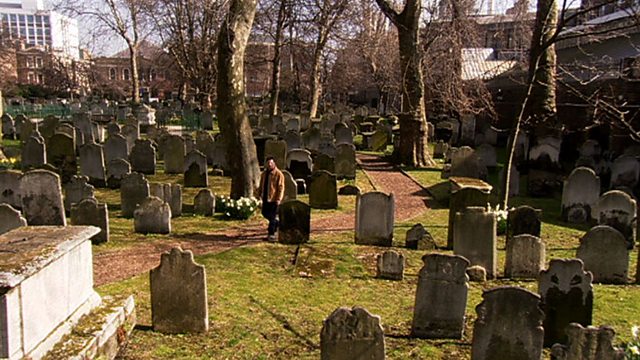
Urban oases
Garden graveyards became sanctuaries for wildlife in the era before urban parks were set up.
It was cholera that was the major killer in London. In one year 14,000 Londoners died of the disease. The average life expectancy of a man was reduced to just 29 years. In the early 1800s, 57% of children died before they were 5 years old. And family gravestones like this one reveal the shocking reality. Elizabeth and Hannah were three years old, Phoebe was 19 months and Thomas and David were just two months old. Out of seven children only two made it into adulthood. In this tiny plot alone 123, 000 bodies were buried. London’s graveyards were quite literally overflowing – with putrefaction. Something had to be done. Eventually Parliament passed a bill in 1832 encouraging the establishment of seven private cemeteries around outer London. In an era before the existence of large urban parks, ‘garden cemeteries’ became popular places for a carriage ride or a stroll. Left undisturbed for years, they have now become some of our best urban oases for wildlife. These cemeteries included Kensal Green, Highgate and Brompton. Here at Brompton the 40-acre site now holds 200,000 graves.
Duration:
This clip is from
Featured in...
![]()
±«Óãtv Nature
Be captivated, informed and inspired by the world's wildlife.
More clips from Revolution
-
![]()
Canal plants
Duration: 01:17
-
![]()
Falcon quarry
Duration: 01:44
-
![]()
Fireweed
Duration: 01:00
-
![]()
Digging competition
Duration: 00:51
More clips from British Isles: A Natural History
-
![]()
Gastronomic garden snails—Taming the Wild
Duration: 01:04
-
![]()
Canal plants—Revolution
Duration: 01:17
-
![]()
Japanese knotweed—Our Future
Duration: 03:20
-
![]()
Falcon quarry—Revolution
Duration: 01:44








